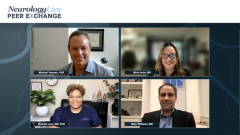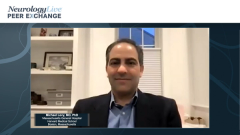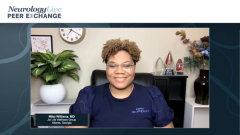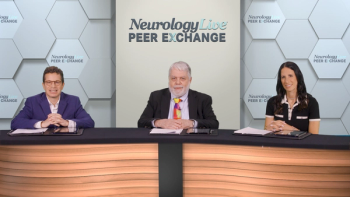
Health Care Utilization Rates Among Patients With NMOSD
Experts in neurology share their experiences with how patients with NMOSD are utilizing health care, and helping patients achieve optimal care.
Episodes in this series

Michael Yeaman, PhD: That brings us into the realm where there are connectivities that might be improved to better diagnose and treat physical disease and mental health. If you were to think about utilization of health care among patients with NMOSD [neuromyelitis optica spectrum disorder], ranging from acute first episode care to regular checkups when everything is going well, how does this differ among different population groups? I’ll start with Mirla. Are there groups you see that are more likely to utilize health care in a preventive way? Or do they respond only when there’s something bad happening? How do you see that in your experience?
Mirla Avila, MD: My White patients utilize it much more. Unfortunately, Hispanic culture tends to be that unless you’re dying, you don’t see a doctor. There’s a lot of cultural bias in how we approach health care.
Michael Yeaman, PhD: That’s an important point that isn’t appreciated enough. Mitzi, could you share your perspectives and your experience?
Mitzi Williams, MD: Absolutely. I live in Atlanta, Georgia, which has a large affluent population of people of color, particularly Black patients. Many people are aware of resources. But my patients with higher socioeconomic status and those who we may consider a little more privileged have more awareness of what’s available or what their options are. They may ask proactively about certain things, such as physical therapy or whether there’s rehab for visual impairment or vocational rehab.
It’s often because of whom they may associate with. If you’re in a certain socioeconomic status, you may have a friend or a family member who’s a doctor. When you can call on those resources, and they can call on their friends, you have a higher level of awareness about what’s available to you and what you should be asking vs others who may not have that awareness. It’s our job as health care providers to offer them the resources available, but some populations are much more proactive in asking for things or may be aware of things that I’m not aware of depending on whom they know or their contacts or connections.
Michael Yeaman, PhD: Educating health care providers is one part of the equation. Well-informed patients are another part. Michael, you do a lot of work in digital media and social media. Can you give us some tips on how to inform patients so that they can participate in their care in an optimal way?
Michael Levy, MD, PhD: Patients spend a lot of time reading about NMO and looking for information specific to their disease. There’s a lot of misinformation out there, and patients can get confused with all the literature that may not be exactly pertinent to them. But I appreciate when patients bring studies or news articles to the clinic and ask, “Does this pertain to me? Am I reading the right material?” I can say yes or no or “Why don’t you try reading this? Here are some great websites and resources.” That eagerness to consume the right information is good for patients, and it’s on us to make sure they can find it. I want to commend programs like this and the Guthy-Jackson Charitable Foundation for making those resources available.
Michael Yeaman, PhD: Thanks a lot, Michael.
Transcript edited for clarity
Newsletter
Keep your finger on the pulse of neurology—subscribe to NeurologyLive for expert interviews, new data, and breakthrough treatment updates.




